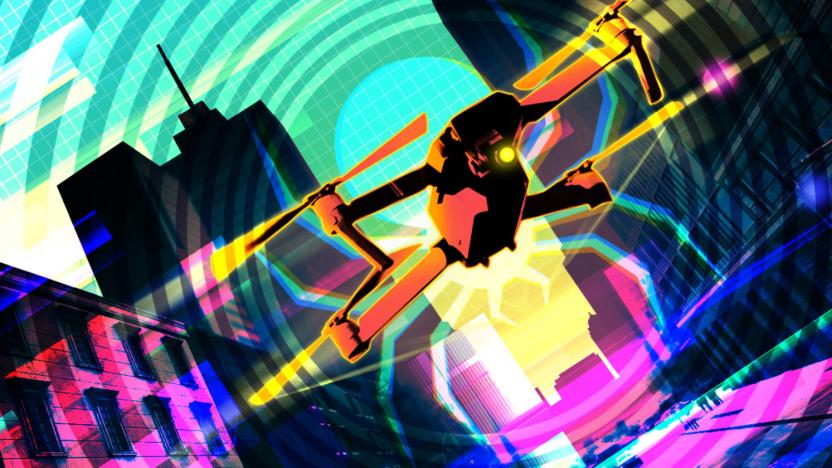NanyangTechnologicalUniversity
Latest

Researchers say 'spidey senses' could help self-driving vehicles avoid hazards
Researchers want to give cars, planes and drones "spidey senses." That is, they want to give autonomous machines sensors that mimic nature. In a paper published in ACS Nano, a team of researchers -- from Purdue University, Nanyang Technological University in Singapore and ETH Zürich -- propose integrating spider-inspired sensors into the exterior of autonomous machines. Doing so, they say, would allow vehicles to selectively process data faster than currently possible.

ICYMI: Segway's plan B and flexible concrete
try{document.getElementById("aol-cms-player-2").style.display="none";}catch(e){}Today on In Case You Missed It: Segway came to Intel's Developer's Forum to show a prototype for a self-balancing scooter that is also a robot. If the public SDK works out well, Segway hopes to release a consumer version of whatever it becomes in 2017.

ICYMI: Take-home laser razor, IKEA-building bot and more
#fivemin-widget-blogsmith-image-563237{display:none;} .cke_show_borders #fivemin-widget-blogsmith-image-563237, #postcontentcontainer #fivemin-widget-blogsmith-image-563237{width:570px;display:block;} Today on In Case You Missed It: A Kickstarter campaign for a razor has us all riveted. Rather than the cold, hard metal we're all used to, it uses a laser-beam to cut hair. Meanwhile roboticists at the Nanyang Technological University in Singapore are working on the next frontier of using robots-- how to get one to build a complicated piece of IKEA furniture. No, we are not joking. Use it for fodder for every argument you've ever had upon stepping into that hell-hole. If the robots can't do it, we can always look to the future with this kids game that uses slot cars to also teach them how to code.

Advanced optical fibers could give rise to human-like AI brains
We haven't built a truly sentient artificial ntelligence system yet, like the Terminator or C-3PO -- you know, the kind of AI that scares Elon Musk and Stephen Hawking. But a team of researchers believe they've at least found the secret to creating human-like artificial brains. More specifically, they've discovered that optical fiber made from chalcogenides can create synapses to latch onto each other, just like what happens in our gray matter. Chalcogenide is a light-sensitive compound typically used to manufacture glass for photocopiers, and it allows the the fibers to process vast amounts of data.

Fast-charging batteries will power your gadgets for 20 years
Fast-charging batteries are all nice and good, but the lifespan matters, too -- why should you have to replace power packs (or entire devices) every couple of years ? You may not have to give up performance or longevity if researchers at Nanyang Technology University have their way. They've developed new lithium ion batteries that can reach a 70 percent charge in two minutes, but should also last for over 20 years -- several times longer than the cells in your current laptop or smartphone. The trick is using titanium dioxide nanotubes for the anode (the negative pole) instead of graphite; they both speed up the battery's chemical reactions while offering 10,000 charging cycles instead of the usual 500.

Scientists develop flush-efficient toilet system that can turn waste into energy, sort before it recycles
Scientists from Singapore's Nanyang Technological University aren't keen on being wasteful -- that's why they've developed a toilet that uses 90% less water than other commodes and is capable of generating energy. Aptly named the No-Mix Vacuum Toilet, the porcelain pedestal's pot divides waste between two partitions -- one side for liquids, the other for solids -- and uses vacuum tech reminiscent of airline lavatories. Flushing solid and fluid wastes with 1 and 0.2 liters of H2O, respectively, the can will be able to route refuse to external processing facilities. Fertilizer ingredients such as nitrogen, potassium and phosphorous would then be harvested from liquids. Similarly, methane can be coaxed from solids for conversion to electricity or as a replacement for other natural gasses. Two of the university's restrooms are slated to have the toilets installed in the near future, and the team expects the thrones to roll out worldwide within three years. [Thanks, Yuka]

Attack of the animalbots: octopus, fish inspire new robot designs
Rather than a future filled with humanoid robotic overlords as envisioned by the Terminator films, the proliferation of animal-inspired robots makes it seem much more likely that we'll be doing the bidding of a veritable zoo of snakebots, insectbots, robolobsters, mulebots, and perhaps the occasional sharkbot / attack dolphin. The latest animals to have their moves cribbed by researchers are the octopus and fish, with DARPA working on a pneumatic tentacle to replace the clumsy robotic claws of old, while students and faculty at Singapore's Nanyang Technological University have invented a robotic, propeller-less propulsion system that mimics the undulating motion of fins. DARPA's invention, called the Octarm and part of the larger Biodynotics program, was developed in collaboration with scientists at the University of North Carolina, and uses a 24-volt electro-pneumatic pressure system to control a tapered, inflatable arm that can do both fairly precise work as well as heavier lifting. NTU's project, meanwhile, employs an artificial fin attached to adjustable spokes that create a wave-like motion for propelling the bot forward in a manner very similar to a stingray's movements. Movies of both new members of the growing animalbot army, whose purposes are mostly military in nature, are available by following the "Read" links below...Read- Octarm [Via Engadget Japanese]Read- Fishbot [Via Yahoo! Asia]




